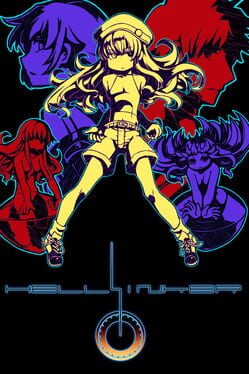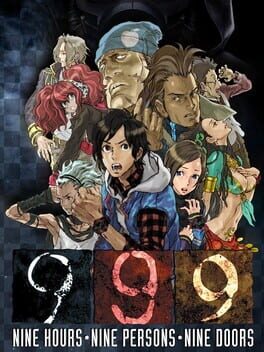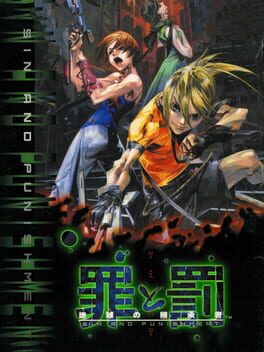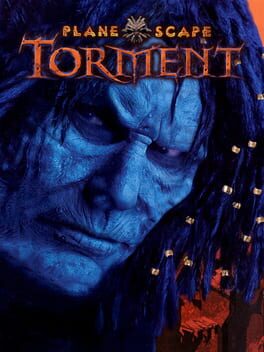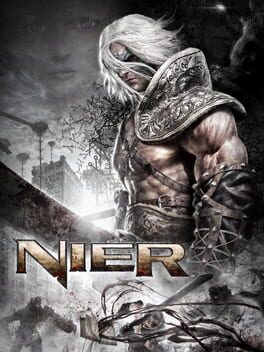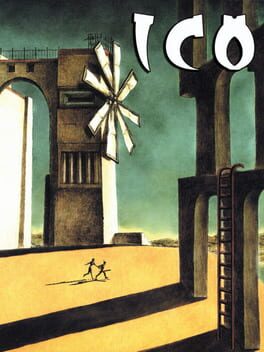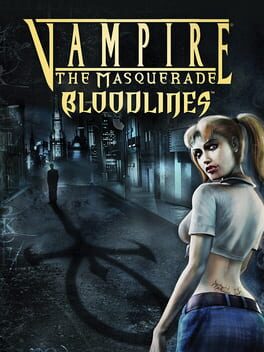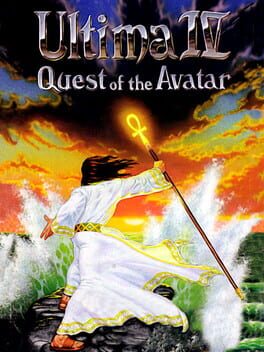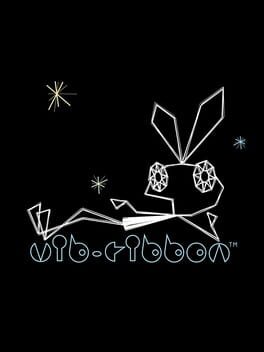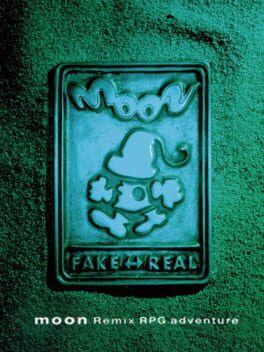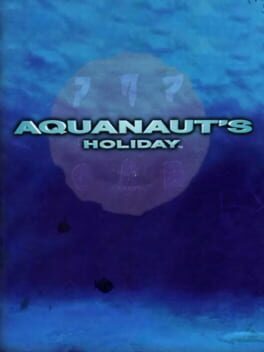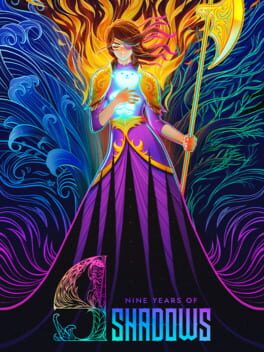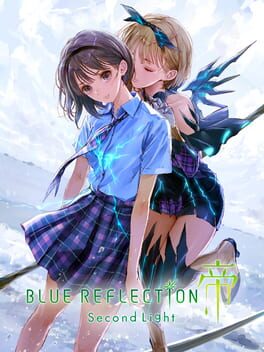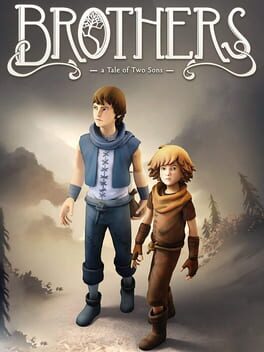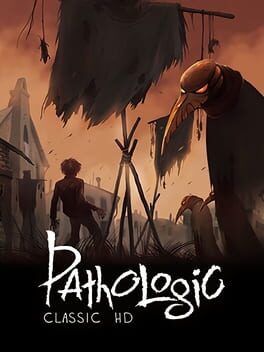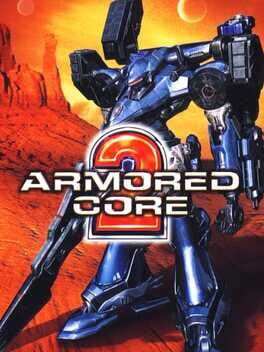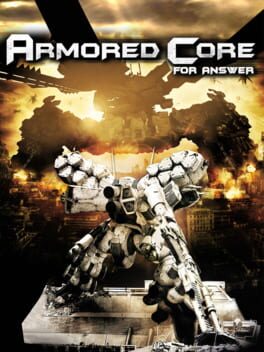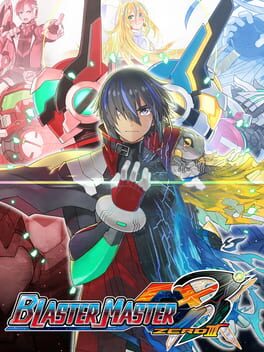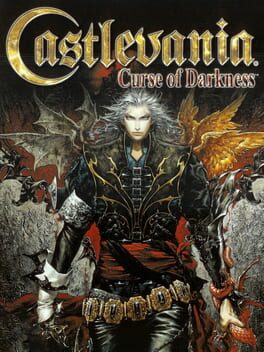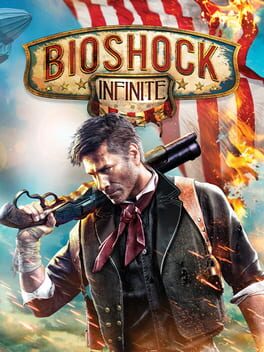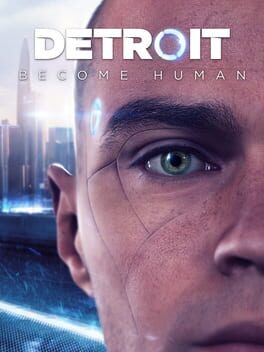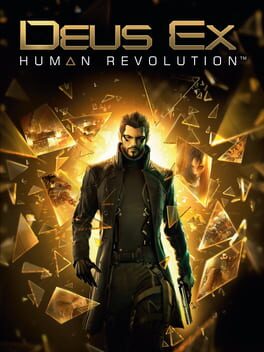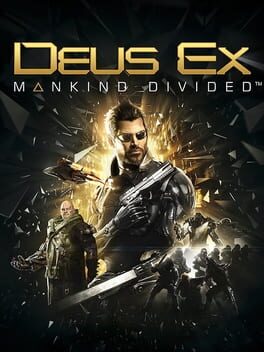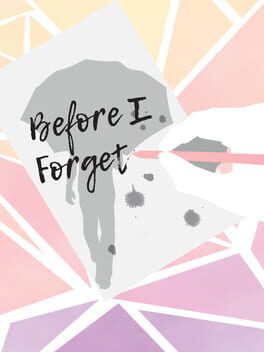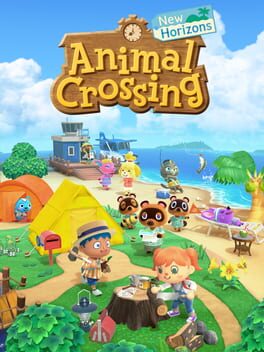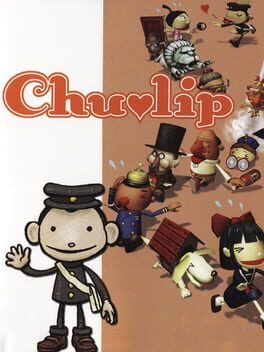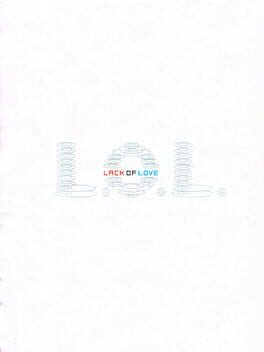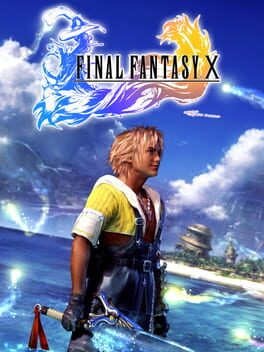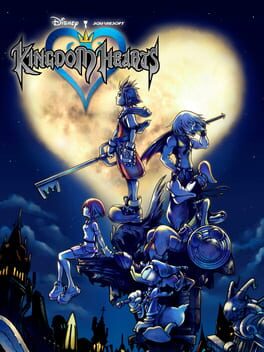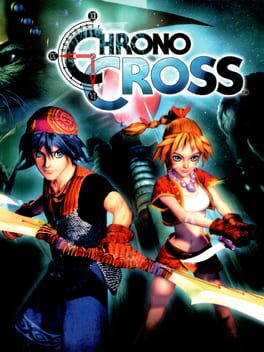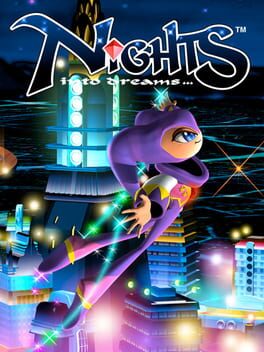Batt
66 reviews liked by Batt
HellSinker
2007
100% achievements.
November 6th, 2023, marks the day I would begin my journey of playing Hellsinker. 5 months and a day to be exact. With interest spawning from a stray suggestion by a friend of mine, this would quickly result in an obsessive play-through which then graduated to an obsessive achievement hunt which would THEN go on infiltrate my personal life via absolutely wreaking havoc on my sleep schedule, even hijacking my dreams.
And I couldn't be more thankful.
Quite honestly, I'm not sure where to take this review, I'll let my fingers glide along the keyboard and post whatever crops up.
At 89.1 hours, Hellsinker sits comfortably at my #5 most played game on Steam. Despite this, I've only gone on to engage with the game in its entirety through the lens of 1 character. The game features 4 characters, 1 of which has 4 "Ordinance Packages" which change up their loadout. Essentially, this 1 character is 4 though their endings remain the same between loadouts. This leaves me with a staggering 1/7 true completion. In addition to this, each character does have a unique ending depending on their TLB progression, not viewable within the game's text sequence viewer. Though I've already gone ahead and watched a video showing their contents (SPOILERS (DUH!)), I'd still love to play the game to experience them firsthand.
Alright, what more is there left for me do? Surely after that I would have completed EVERYTHING there is to this game... right?
WRONG! THERE'S SO MUCH! THERE'S QUITE FRANKLY TOO MUCH! AND I THINK THE FUNNIEST PART HAS TO BE HOW ABSOLUTELY UNINTENDED MOST OF THE EXTRA STUFF IS!
I'll start by introducing this game's older sibling, Radio Zonde. Yes, I have played the game before, but I haven't really completed in a manner I find acceptable, so there's still this entire game for me to play. Much of the ideas regarding design both graphics and gameplay are very much seen within Hellsinker. 1CC for Radio Zonde TBD.
Following this game would then come Hellsinker but in the form of a demo, kinda? Colloquially the build is known as Hellsinker 0.95. This build is quite.... special. There's a bajillion changes from this version of the game to the Doujin and Steam releases and although I'd like to talk about them all day I'll spare this "review" the word count and cut to the main thing. This game, although presenting itself as a demo, actually holds within itself the entire game but more importantly the final stage(SPOILERS(AGAIN(DUH!))) accessible through dropping in some files graciously provided by the original poster. In a non-patched version, only stages 1-4 are playable. The cut special stages also feature 2 versions from what I understand looking at the channel. One version would then go on to become the Shrine seen in the Doujin and Steam release. The other version cut from the final releases feature something adjacent to a dungeon crawler style level (not spoilers).
Okay so. That's it right? Nothing more? There couldn't possibly be more?
But there is! All of these are from the game's Doujin release era (so like 2007-2011?) I'll tally up everything here:
>Doujin release (PURCHASED)
>Completion of said Doujin release (unsure if I'll do all characters TLB but I'll cross that bridge when I get there)
>Buying the fanzines (warning the page probably has some Not Safe For Work Ads so please use an adblocker <3 ) and then reading said fanzines (currently studying Japanese primarily for that)
>A 3D Hellsinker Railshooter fangame (Completed)
>A Puyo Puyo styled Hellsinker puzzle game (Completed)
>Another Hellsinker fangame though I don't really know what to compare this one to, check the IGDB page for more info (Completed)
...and that's it. At that point, I'll have fully exhausted myself on every possible official and unofficial expression of love for this game. Have I made it obvious enough how much I love this game?
I'm currently in ownership of pretty much every version of the game out there with their fan-patches in addition to the fan-games so if you'd like any of that please contact my either on Twitter or Discord @strawhatcanti. Thank you for reading. Until the next "review" goes up,
Keep your dignity.
November 6th, 2023, marks the day I would begin my journey of playing Hellsinker. 5 months and a day to be exact. With interest spawning from a stray suggestion by a friend of mine, this would quickly result in an obsessive play-through which then graduated to an obsessive achievement hunt which would THEN go on infiltrate my personal life via absolutely wreaking havoc on my sleep schedule, even hijacking my dreams.
And I couldn't be more thankful.
Quite honestly, I'm not sure where to take this review, I'll let my fingers glide along the keyboard and post whatever crops up.
At 89.1 hours, Hellsinker sits comfortably at my #5 most played game on Steam. Despite this, I've only gone on to engage with the game in its entirety through the lens of 1 character. The game features 4 characters, 1 of which has 4 "Ordinance Packages" which change up their loadout. Essentially, this 1 character is 4 though their endings remain the same between loadouts. This leaves me with a staggering 1/7 true completion. In addition to this, each character does have a unique ending depending on their TLB progression, not viewable within the game's text sequence viewer. Though I've already gone ahead and watched a video showing their contents (SPOILERS (DUH!)), I'd still love to play the game to experience them firsthand.
Alright, what more is there left for me do? Surely after that I would have completed EVERYTHING there is to this game... right?
WRONG! THERE'S SO MUCH! THERE'S QUITE FRANKLY TOO MUCH! AND I THINK THE FUNNIEST PART HAS TO BE HOW ABSOLUTELY UNINTENDED MOST OF THE EXTRA STUFF IS!
I'll start by introducing this game's older sibling, Radio Zonde. Yes, I have played the game before, but I haven't really completed in a manner I find acceptable, so there's still this entire game for me to play. Much of the ideas regarding design both graphics and gameplay are very much seen within Hellsinker. 1CC for Radio Zonde TBD.
Following this game would then come Hellsinker but in the form of a demo, kinda? Colloquially the build is known as Hellsinker 0.95. This build is quite.... special. There's a bajillion changes from this version of the game to the Doujin and Steam releases and although I'd like to talk about them all day I'll spare this "review" the word count and cut to the main thing. This game, although presenting itself as a demo, actually holds within itself the entire game but more importantly the final stage(SPOILERS(AGAIN(DUH!))) accessible through dropping in some files graciously provided by the original poster. In a non-patched version, only stages 1-4 are playable. The cut special stages also feature 2 versions from what I understand looking at the channel. One version would then go on to become the Shrine seen in the Doujin and Steam release. The other version cut from the final releases feature something adjacent to a dungeon crawler style level (not spoilers).
Okay so. That's it right? Nothing more? There couldn't possibly be more?
But there is! All of these are from the game's Doujin release era (so like 2007-2011?) I'll tally up everything here:
>Doujin release (PURCHASED)
>Completion of said Doujin release (unsure if I'll do all characters TLB but I'll cross that bridge when I get there)
>Buying the fanzines (warning the page probably has some Not Safe For Work Ads so please use an adblocker <3 ) and then reading said fanzines (currently studying Japanese primarily for that)
>A 3D Hellsinker Railshooter fangame (Completed)
>A Puyo Puyo styled Hellsinker puzzle game (Completed)
>Another Hellsinker fangame though I don't really know what to compare this one to, check the IGDB page for more info (Completed)
...and that's it. At that point, I'll have fully exhausted myself on every possible official and unofficial expression of love for this game. Have I made it obvious enough how much I love this game?
I'm currently in ownership of pretty much every version of the game out there with their fan-patches in addition to the fan-games so if you'd like any of that please contact my either on Twitter or Discord @strawhatcanti. Thank you for reading. Until the next "review" goes up,
Keep your dignity.
Every Zero Escape Game:
Protag: Ow, my ass hurts-
Character: That reminds me of this story where this scientist hit his ass on the edge of a table, but didn’t feel it. Then, months later, he died of ass pain. They call it Temporal Ass Pain or TAP
Protag: I’d TAP that-
Character: Say we took two asses, and we both slapped them really hard, there’d be a 56.000079% chance that one of them won’t feel it. That pain didn’t just get absorbed by the ass tissue, it’s being transported to the future. They call people who don’t feel Ass pain until later…TAPers…I wonder…if they could transport ass pain to someone else-
Zero: Ive injected Ass Poison into all of your left buttcheeks. You have exactly 2 hours to solve my Ass Slap puzzle.
Protag: Ow, my ass hurts-
Character: That reminds me of this story where this scientist hit his ass on the edge of a table, but didn’t feel it. Then, months later, he died of ass pain. They call it Temporal Ass Pain or TAP
Protag: I’d TAP that-
Character: Say we took two asses, and we both slapped them really hard, there’d be a 56.000079% chance that one of them won’t feel it. That pain didn’t just get absorbed by the ass tissue, it’s being transported to the future. They call people who don’t feel Ass pain until later…TAPers…I wonder…if they could transport ass pain to someone else-
Zero: Ive injected Ass Poison into all of your left buttcheeks. You have exactly 2 hours to solve my Ass Slap puzzle.
so, i played through this game with a close friend and then revisited some pivotal moments on my own after completing some of uchikoshi's previous work, namely never7 and ever17. this was my first uchikoshi game proper, and upon revisiting it, it's still pretty cool, but very much bleeds his issues and lovable incompetence as a writer passionately from time to time. i've come to label uchikoshi lovingly as 'a hack, but my kind of hack', and that's more prevalent here than in any of his other work i've yet to experience.
the actual gameplay of 999 is pretty dope. i think the puzzles are generally pretty interesting and very adv-game-on-the-ds-y feeling like a hodgepodge of ace attorney and flash escape room games in just the way for it to feel comfy and right at home. the presentation is superb for the ds, with really lively sprites and artwork. soundtrack's solid but definitely not as memorable as ever17's, though in all fairness that's in the upper echelon of vn soundtracks in my book.
the biggest issue with 999 lies in the fact that uchikoshi basically has no one reeling him in, and considering he might simultaneously be one of the best ideas guys and one of the worst pacing guys in visual novel history, you will constantly be barraged with walls of text, worse as the game goes on, about high-concept theories or phenomena that don't actually end up affecting the plot in any meaningful way. it becomes clear in retrospect that for as cool as much of it is, only about a third of the things the game slows to a crawl to bring to your attention is actually relevant. and considering the fact that the plot is as time-demanding as it is considering the circumstances of the cast, that can border on destructive to the tone at its worst moments. the cast is relatively balanced in coverage but that said it definitely feels as if some characters essentially had to have a purpose shoved in at the last second - particularly lotus, clover and 9th man. this is all without mentioning some pretty egregious shaggy dog jokes around sex or whatever. i would've expected this more out of ever17, or ESPECIALLY never7, but no, it's at its most egregious in zero escape, thus far. and i don't mind a pervy joke or two, but christ alive, 999 takes like 10 minutes to get its overwith at an otherwise incredibly pivotal moment in the story.
for all this game allegedly steals from uchikoshi's previous work, more specifically ever17 (which i don't deny the obvious overlap with) it often misses the context and point of those ideas or moments existing in the first place. and certainly, this wasn't a game that was designed to, or needed, a sequel - i'm more than happy with this being my first and only excursion into zero escape for the time being. while i've been pretty critical of it, i do really genuinely enjoy this game a lot - i'm just familiar enough with uchikoshi's work at this point to give it an honest lookback and compare it to his previous releases.
the actual gameplay of 999 is pretty dope. i think the puzzles are generally pretty interesting and very adv-game-on-the-ds-y feeling like a hodgepodge of ace attorney and flash escape room games in just the way for it to feel comfy and right at home. the presentation is superb for the ds, with really lively sprites and artwork. soundtrack's solid but definitely not as memorable as ever17's, though in all fairness that's in the upper echelon of vn soundtracks in my book.
the biggest issue with 999 lies in the fact that uchikoshi basically has no one reeling him in, and considering he might simultaneously be one of the best ideas guys and one of the worst pacing guys in visual novel history, you will constantly be barraged with walls of text, worse as the game goes on, about high-concept theories or phenomena that don't actually end up affecting the plot in any meaningful way. it becomes clear in retrospect that for as cool as much of it is, only about a third of the things the game slows to a crawl to bring to your attention is actually relevant. and considering the fact that the plot is as time-demanding as it is considering the circumstances of the cast, that can border on destructive to the tone at its worst moments. the cast is relatively balanced in coverage but that said it definitely feels as if some characters essentially had to have a purpose shoved in at the last second - particularly lotus, clover and 9th man. this is all without mentioning some pretty egregious shaggy dog jokes around sex or whatever. i would've expected this more out of ever17, or ESPECIALLY never7, but no, it's at its most egregious in zero escape, thus far. and i don't mind a pervy joke or two, but christ alive, 999 takes like 10 minutes to get its overwith at an otherwise incredibly pivotal moment in the story.
for all this game allegedly steals from uchikoshi's previous work, more specifically ever17 (which i don't deny the obvious overlap with) it often misses the context and point of those ideas or moments existing in the first place. and certainly, this wasn't a game that was designed to, or needed, a sequel - i'm more than happy with this being my first and only excursion into zero escape for the time being. while i've been pretty critical of it, i do really genuinely enjoy this game a lot - i'm just familiar enough with uchikoshi's work at this point to give it an honest lookback and compare it to his previous releases.
‘You know what I hate most in the world? Hope, Faith, Love, and Luck.’
Played with BertKnot, through the remastered collection, to which the score applies.
In 2009, Kotaro Uchikoshi presented a new idea, resulting in the Zero Escape series. Some of the themes were already present in his previous works, such as Ever17: The Out of Infinity (2003) or 12Riven: The ΨCliminal of Integral (2008). The concept of an enclosed environment serving as a setting for a mystery was already present, continuing a well-known convention of detective fiction. While these seminal titles were visual novels and offered only limited interaction, Nine Hours, Nine Persons, Nine Doors interweaves novel sequences with gameplay-driven sections in the form of escape rooms. The most obvious roots of this idea can be found in Myst (1993), which largely popularised the formula of a first-person game – especially browser games –, harkening back to the legacy of the traditional point-n-click games. Initially designed for the DS, Nine Hours, Nine Persons, Nine Doors is one of the console's legendary titles, both for its unique nature and its clever and intuitive use of the hardware. In 2017, a compilation of all three games in the series was released, allowing players to experience the entire franchise on the latest platforms, with new modern visuals and quality of life options.
The player assumes the role of Junpei, who wakes up in a cabin closed by a strange mechanism, having been kidnapped by a mysterious masked figure. Immediately, the title introduces its escape room mechanics: the player must navigate between several fixed screens and interact with different objects, in order to find a way to open the door of the room. Puzzles punctuate these sequences, often codes to solve or small mathematical problems: they never represent a tremendous challenge, especially as they are often based on the same repeating themes, but they always provide a sense of satisfaction when they are solved. After leaving the cabin Junpei meets eight other characters who have also been captured by Zero. The latter makes contact with the group and explains that they will have to work together to escape; however, the story and the motivations of each character seem to be more complex than they appear. The game involves progressing through the different rooms, while solving the mysteries and murders that occur against the backdrop of these sordid games.
Whilst the remastered version may evoke the Danganronpa series, 999 is surprisingly humble in its direction. The escape rooms do not deviate from their gimmicks and a real emphasis is set on the puzzles, whose difficulty is calibrated to be accessible to the greatest number. It is during the visual novel sequences that the storyline becomes more intense and the plot thickens. In these sections, the player sometimes has to choose an option, such as the next door they want to go through. A playthrough takes the player past three different doors, leading to various endings. Three of them are considered bad outcomes, contrasting with the normal ending and the true one. Regardless of which branchings are selected, a specific door will always lead to the same room and the same puzzles, although new dialogues might also appear, depending on the choices previously made. This strict dichotomy between narrative and gameplay may come as a surprise, especially in the original version, in which the player was forced to redo a new route in its entirety, regardless of whether they had already solved a room in a previous playthrough.
The remaster introduced the Flow, a diagram that summarises the story's junctions and allows the player to skip parts of the game that have already been played. The pacing has thus been quickened and it is now possible to finish the title in half the time it took on the Nintendo DS. This added quality of life is certainly understandable by modern standards regarding visual novels, but it is difficult not to feel as if the game has lost part of its appeal. The transition to newer platforms has removed the DS's distinctive sprites for more traditional and standardised design. The 16:9 resolution makes some of the environments a little too wide and loses the spatial narrowness implied by the smaller screens. As for the Japanese dubbing, it features talented voice actors – Ace is voiced by the prestigious Takaya Hashi, while Snake and Lotus are dubbed by Takahiro Sakurai and Rie Tanaka, respectively – and, while it sheds the magic of the indistinct dialogue noises, it nevertheless suits the game's tone. The bleakest aspect of the remaster is certainly the closing hours of the game. They suffer sorely from not having the dual screens of Nintendo's console; worse still, the final puzzle has been replaced by a painfully hollow enigma, utterly shattering the tension of the finale.
Beyond the notion of conservation, it is tough not to consider the remaster as a downgraded version of the original title. Certainly, the addition of Flow saves time, but its implementation also lacks elegance and clarity to really deserve laurels and make up for the other choices. In 2009, Nine Hours, Nine Persons, Nine Doors was a unique foray from the Japanese mystery fiction into the West, showcasing a part of the prolific Japanese production. The art direction, halfway between Japanese animation and Western cartoon, accompanied the subversion of the traditional conventions associated with the different characters, and offered a story that was quite unusual compared to the family-friendly releases that most Nintendo DS owners were used to. The gameplay of the puzzles was likewise tuned for touchscreen use and their remastering is hardly convincing: the occasional wheels that need to be turned are implemented in the most cumbersome way possible, relying on a button to start and stop turning them, whereas the DS version simply let the player use their stylus. It is very noticeable that the remaster was designed for home consoles, as even the PC version doesn't take advantage of the mouse cursor. The decision to discard what made the original version so unique – and at the same time, how could it be retained? – sadly puts the title among the plethora of recent visual novels based on macabre games.
Fortunately, the source material is great enough to compensate for these shortcomings. The story unfolds organically and offers a clever mystery, which very alert players will be able to anticipate, carried by a charming and never obnoxious cast: their interactions feel natural, as the characters are more than the trope they initially embody and have the merit of being mostly adults. Admittedly, the gender representation remains within the sexist clichés of Japanese anime, but there is some effort to bring more depth to the various figures. This makes their explanations of the numerous scientific experiments quite apropos and believeworthy – even when it comes to pseudo-sciences –, although one could be dubious when faced with someone knowledgeable about every single trivia regarding the sinking of the Titanic. By and large, the title avoids being too long-winded, except perhaps for the repetitions between the normal and the true endings – albeit diegetically warranted. The game never falls into gratuitous cruelty and shows respect for the individuality of each character, contrasting very favourably with Danganronpa.
It is tough to blame Nine Hours, Nine Persons, Nine Doors, in its remastered version, for being a disappointment, as it is constrained by more recent systems, for whom the puzzles were not designed. Simultaneously, it is arduous not to consider this version as half-baked and lacking in identity. Some graphical assets have been destroyed by the upscale and the UI has a very unpleasant amateurish quality. In spite of that, 999 remains a title of rare quality, capable of surprising the player unaccustomed to the detective genre. The respect for its cast makes it an enjoyable experience from start to finish and establishes it as a classic for anyone interested in either mysteries or escape rooms. If the absence of the Flow system is not inconvenient, the DS version is still the one to recommend, so as to enjoy the game experience as imagined by Kotaro Uchikoshi.
Played with BertKnot, through the remastered collection, to which the score applies.
In 2009, Kotaro Uchikoshi presented a new idea, resulting in the Zero Escape series. Some of the themes were already present in his previous works, such as Ever17: The Out of Infinity (2003) or 12Riven: The ΨCliminal of Integral (2008). The concept of an enclosed environment serving as a setting for a mystery was already present, continuing a well-known convention of detective fiction. While these seminal titles were visual novels and offered only limited interaction, Nine Hours, Nine Persons, Nine Doors interweaves novel sequences with gameplay-driven sections in the form of escape rooms. The most obvious roots of this idea can be found in Myst (1993), which largely popularised the formula of a first-person game – especially browser games –, harkening back to the legacy of the traditional point-n-click games. Initially designed for the DS, Nine Hours, Nine Persons, Nine Doors is one of the console's legendary titles, both for its unique nature and its clever and intuitive use of the hardware. In 2017, a compilation of all three games in the series was released, allowing players to experience the entire franchise on the latest platforms, with new modern visuals and quality of life options.
The player assumes the role of Junpei, who wakes up in a cabin closed by a strange mechanism, having been kidnapped by a mysterious masked figure. Immediately, the title introduces its escape room mechanics: the player must navigate between several fixed screens and interact with different objects, in order to find a way to open the door of the room. Puzzles punctuate these sequences, often codes to solve or small mathematical problems: they never represent a tremendous challenge, especially as they are often based on the same repeating themes, but they always provide a sense of satisfaction when they are solved. After leaving the cabin Junpei meets eight other characters who have also been captured by Zero. The latter makes contact with the group and explains that they will have to work together to escape; however, the story and the motivations of each character seem to be more complex than they appear. The game involves progressing through the different rooms, while solving the mysteries and murders that occur against the backdrop of these sordid games.
Whilst the remastered version may evoke the Danganronpa series, 999 is surprisingly humble in its direction. The escape rooms do not deviate from their gimmicks and a real emphasis is set on the puzzles, whose difficulty is calibrated to be accessible to the greatest number. It is during the visual novel sequences that the storyline becomes more intense and the plot thickens. In these sections, the player sometimes has to choose an option, such as the next door they want to go through. A playthrough takes the player past three different doors, leading to various endings. Three of them are considered bad outcomes, contrasting with the normal ending and the true one. Regardless of which branchings are selected, a specific door will always lead to the same room and the same puzzles, although new dialogues might also appear, depending on the choices previously made. This strict dichotomy between narrative and gameplay may come as a surprise, especially in the original version, in which the player was forced to redo a new route in its entirety, regardless of whether they had already solved a room in a previous playthrough.
The remaster introduced the Flow, a diagram that summarises the story's junctions and allows the player to skip parts of the game that have already been played. The pacing has thus been quickened and it is now possible to finish the title in half the time it took on the Nintendo DS. This added quality of life is certainly understandable by modern standards regarding visual novels, but it is difficult not to feel as if the game has lost part of its appeal. The transition to newer platforms has removed the DS's distinctive sprites for more traditional and standardised design. The 16:9 resolution makes some of the environments a little too wide and loses the spatial narrowness implied by the smaller screens. As for the Japanese dubbing, it features talented voice actors – Ace is voiced by the prestigious Takaya Hashi, while Snake and Lotus are dubbed by Takahiro Sakurai and Rie Tanaka, respectively – and, while it sheds the magic of the indistinct dialogue noises, it nevertheless suits the game's tone. The bleakest aspect of the remaster is certainly the closing hours of the game. They suffer sorely from not having the dual screens of Nintendo's console; worse still, the final puzzle has been replaced by a painfully hollow enigma, utterly shattering the tension of the finale.
Beyond the notion of conservation, it is tough not to consider the remaster as a downgraded version of the original title. Certainly, the addition of Flow saves time, but its implementation also lacks elegance and clarity to really deserve laurels and make up for the other choices. In 2009, Nine Hours, Nine Persons, Nine Doors was a unique foray from the Japanese mystery fiction into the West, showcasing a part of the prolific Japanese production. The art direction, halfway between Japanese animation and Western cartoon, accompanied the subversion of the traditional conventions associated with the different characters, and offered a story that was quite unusual compared to the family-friendly releases that most Nintendo DS owners were used to. The gameplay of the puzzles was likewise tuned for touchscreen use and their remastering is hardly convincing: the occasional wheels that need to be turned are implemented in the most cumbersome way possible, relying on a button to start and stop turning them, whereas the DS version simply let the player use their stylus. It is very noticeable that the remaster was designed for home consoles, as even the PC version doesn't take advantage of the mouse cursor. The decision to discard what made the original version so unique – and at the same time, how could it be retained? – sadly puts the title among the plethora of recent visual novels based on macabre games.
Fortunately, the source material is great enough to compensate for these shortcomings. The story unfolds organically and offers a clever mystery, which very alert players will be able to anticipate, carried by a charming and never obnoxious cast: their interactions feel natural, as the characters are more than the trope they initially embody and have the merit of being mostly adults. Admittedly, the gender representation remains within the sexist clichés of Japanese anime, but there is some effort to bring more depth to the various figures. This makes their explanations of the numerous scientific experiments quite apropos and believeworthy – even when it comes to pseudo-sciences –, although one could be dubious when faced with someone knowledgeable about every single trivia regarding the sinking of the Titanic. By and large, the title avoids being too long-winded, except perhaps for the repetitions between the normal and the true endings – albeit diegetically warranted. The game never falls into gratuitous cruelty and shows respect for the individuality of each character, contrasting very favourably with Danganronpa.
It is tough to blame Nine Hours, Nine Persons, Nine Doors, in its remastered version, for being a disappointment, as it is constrained by more recent systems, for whom the puzzles were not designed. Simultaneously, it is arduous not to consider this version as half-baked and lacking in identity. Some graphical assets have been destroyed by the upscale and the UI has a very unpleasant amateurish quality. In spite of that, 999 remains a title of rare quality, capable of surprising the player unaccustomed to the detective genre. The respect for its cast makes it an enjoyable experience from start to finish and establishes it as a classic for anyone interested in either mysteries or escape rooms. If the absence of the Flow system is not inconvenient, the DS version is still the one to recommend, so as to enjoy the game experience as imagined by Kotaro Uchikoshi.
Sin and Punishment
2000
A (neon) genesis for rail gunning. Art haus shooter holy grail, diamond encrusted. Humanity alone is incapable of striving towards such innovation, ribbon & bowed; a true mechanical dream. Alternative Focault essay title.
Utilizes every iota of its arsenal at least once during any & all angle or angel. To peer at a target down thee barrel is to be on its opposite end all thee same. Never comfortable in a clean board, always pushing you to fill every inch of thee screen with unbridled chaos & in chaos, is warmth; is achievement.
Crowning royale of what 3D can be: not a mirror to our own world, but an ever-shifting perspective.
Part of my Light/Rail Shooter list.
Utilizes every iota of its arsenal at least once during any & all angle or angel. To peer at a target down thee barrel is to be on its opposite end all thee same. Never comfortable in a clean board, always pushing you to fill every inch of thee screen with unbridled chaos & in chaos, is warmth; is achievement.
Crowning royale of what 3D can be: not a mirror to our own world, but an ever-shifting perspective.
Part of my Light/Rail Shooter list.
Drakengard
2003
Drakengard
2003
My first exposure to Drakengard was watching a LP on youtube to catch up with the series in preparation for Nier Automata. I sat there fast forwarding the missions until the cutscenes came up, chuckling at the overacting done by the cardboard characters, and finding some brief amusement as the plot got progressively more fucked up, culminating in a "I get it" from me and moving on with my day. Turns out that, no, I didn't get it. Unless you actually sit down and go through with it, you have no idea how life draining and excrutiating this shit can get.
From the moment you first swing your sword at the endless spawning enemy soldiers in a wasteland of early ps2 environments and you feel how kinesthetically unpleasant it is to control Caim, you have at that point every reason in the world to shut off the game and never pick it up again. What follows from then on is one of the bitterest and most incisive condemnations of the videogame industry and its propensity for using violence as its main language. After spending 20 minutes boringly killing hundreds of enemies for no seemingly apparent reason, and having characters off screen constantly chastising and belitlling you in disgust, while a cacophony of classical symphony samples assault your ears, it honestly doesn't get any better.
You are then greeted by the most bizarre set of cutscenes that have the characters wallowing in self pity and agony, with a bird's eye view camera that never allows us any chance to sympathize or get comfortable with these muppets. The main character even has his ability to speak taken away, giving him no concrete way to express himself other than murder and gladly passing that torch to the player. As I finally completed the story by killing a giant possessed kid after a slog of grinding and repetitive sword slashing, I was more than happy to have my Drakengard experience over with. But 4 endings remain, the game taunts me.
Subjecting yourself to more of Drakengard, the story does indeed open up itself to reveal more. And what it reveals is even more despair and bloodshed. Searching for answers and a better resolution, what you get instead is your allies sharing the gruesome skeletons in their closets, the inescapeable truth of Caim's lust for violence, and the total annihilation of humanity in every shape or form possible. Shit, I'm playing Undertale before Undertale was even a thing.
These characters are forever trapped in this universe conceived purely for eternal war and death, it's no wonder that they are all mentally scarred and can only express themselves through senseless violence and the abuse of others, what can you expect them to do when these are the walls we devised for them? It's only fitting and brilliant then that at the end of it all the universe of Drakengard has no other way of resolving itself besides breaking through our own world to fight a ridiculously challenging final boss that in no way resembles any of the mechanics we spent the last 30 hours wrestling with, only to get annihilated by the people and machines that would have the capacity to create a game such as this one.
What's disturbing is that you eventually learn to compromise with Drakengard. You quickly figure out that you can ignore 90% of the enemies and just dash for the actual targets and you fall into a senseless stupor of boredom that allows you to disengage from the grind. And maybe that's part of its point, but I do wish it was more excrutiating and near impossible to beat. Or maybe i'm just fucked up, who knows. It's one of the best examples I have seen of consolidating a message of anti-violence with the actual act of playing, a narrative that is only fully conveyed if you are the one actually behind the controller. I just don't want to ever play it again, and if you are to get anything out of this review, is that you shouldn't either. Watch a LP.
P.S.: The true horror of Drakengard is coming to the realization that somewhere out there is someone that truly enjoys the ground combat for what it is and isn't remotely aware of the message the game. I shudder at the thought of it.
From the moment you first swing your sword at the endless spawning enemy soldiers in a wasteland of early ps2 environments and you feel how kinesthetically unpleasant it is to control Caim, you have at that point every reason in the world to shut off the game and never pick it up again. What follows from then on is one of the bitterest and most incisive condemnations of the videogame industry and its propensity for using violence as its main language. After spending 20 minutes boringly killing hundreds of enemies for no seemingly apparent reason, and having characters off screen constantly chastising and belitlling you in disgust, while a cacophony of classical symphony samples assault your ears, it honestly doesn't get any better.
You are then greeted by the most bizarre set of cutscenes that have the characters wallowing in self pity and agony, with a bird's eye view camera that never allows us any chance to sympathize or get comfortable with these muppets. The main character even has his ability to speak taken away, giving him no concrete way to express himself other than murder and gladly passing that torch to the player. As I finally completed the story by killing a giant possessed kid after a slog of grinding and repetitive sword slashing, I was more than happy to have my Drakengard experience over with. But 4 endings remain, the game taunts me.
Subjecting yourself to more of Drakengard, the story does indeed open up itself to reveal more. And what it reveals is even more despair and bloodshed. Searching for answers and a better resolution, what you get instead is your allies sharing the gruesome skeletons in their closets, the inescapeable truth of Caim's lust for violence, and the total annihilation of humanity in every shape or form possible. Shit, I'm playing Undertale before Undertale was even a thing.
These characters are forever trapped in this universe conceived purely for eternal war and death, it's no wonder that they are all mentally scarred and can only express themselves through senseless violence and the abuse of others, what can you expect them to do when these are the walls we devised for them? It's only fitting and brilliant then that at the end of it all the universe of Drakengard has no other way of resolving itself besides breaking through our own world to fight a ridiculously challenging final boss that in no way resembles any of the mechanics we spent the last 30 hours wrestling with, only to get annihilated by the people and machines that would have the capacity to create a game such as this one.
What's disturbing is that you eventually learn to compromise with Drakengard. You quickly figure out that you can ignore 90% of the enemies and just dash for the actual targets and you fall into a senseless stupor of boredom that allows you to disengage from the grind. And maybe that's part of its point, but I do wish it was more excrutiating and near impossible to beat. Or maybe i'm just fucked up, who knows. It's one of the best examples I have seen of consolidating a message of anti-violence with the actual act of playing, a narrative that is only fully conveyed if you are the one actually behind the controller. I just don't want to ever play it again, and if you are to get anything out of this review, is that you shouldn't either. Watch a LP.
P.S.: The true horror of Drakengard is coming to the realization that somewhere out there is someone that truly enjoys the ground combat for what it is and isn't remotely aware of the message the game. I shudder at the thought of it.
Drakengard
2003
disenchanting poetic anarchy. quills soaked in blood transcribe fragmented stanzas across pages soiled with tragedy and insanity. hatred sows its seeds, obsessed with the universality of inner struggle. the seeds grow beneath lush fields of thriving imperialistic medievalism. faithful sacrifices are made in the strive towards a greater power personified by the beliefs of humanity. a single man who can only speak in genocidal tantrums sparks the beginning of the end. there is never motivation to continue forward nor is there ever a satisfying feeling of triumph. caim is just going through the motions while others beg for mercy at his feet. violence is a mundane necessity rather than an expressive resolve. not a single ending closes with excitement, only the depressive upset of loss. frenzied classical chords and pounding industrial symphonies amalgamate to feed the player’s own misery. drakengard is chaotically demoralizing, if nothing else.
Final Fantasy VII
1997
When it comes to Final Fantasy VII, I think there tends to be a general fixation on Midgar as a centralized point of identity for the game. And while I do think it's one of the best opening segments in maybe any videogame, what makes it work so well in the grand scheme of things is just how introspective the rest of the game feels when juxtaposed to its explosive sense of grandiosity.
Final Fantasy VII's globe trotting adventure isn't primarily defined by it's sense for theatrics, but by it's mellow tone and somber sensibilities. The towns you come across are oftentimes humble and restrained, carefully crafted with precision point environmental design and delicate cinematography. There's a tender sense of balance to found throughout the whole affair, as it seeks to comfort you just as often as it alienates you. That push-and-pull dynamic it shares with the player is such a key focal point as to what make the worlds of VII and VIII feel so utterly compelling to me, and I can't help but feel that the unquestioned contrast between the science and fantasy elements plays a major factor in how sheerly effective that relationship it is.
Aerith's fate is something I'll never forget, not just because of the effective dramatization found within that one moment, but because of how silent and truly felt her absence is across the rest of the game. A lot of people give this game grief for putting the snowboarding segment not even like twenty minutes later, but the fact that the game just moves on afterwards without dwelling on itself too hard is exactly what I think makes it brilliant. Final Fantasy VII allows its punctual moments to breathe and sink skin deep, and it knows that no amount of self indulgent dialogue commemorating Aerith would ever hit as hard as opening the party screen just to see a missing slot there.
Cloud might not be the person he says he is, but what he becomes through learning to open his heart to other people and show compassion makes him more of a hero than any mere SOLDIER could ever hope to be. He never has any major transformation in regards to physicality and utility, he doesn't have to. Just as he doesn't need to be told by someone that he's finally enough, he always was.
For every magnificent setpiece Final Fantasy VII has, there's a slew of soft spoken moments of beauty that truly make this game what it is, even up to its final moments. It ends the same way it began, a friendly face amidst a writhing future of uncertainty. That faint shimmer of hope shining just as bright as it always has.
Final Fantasy VII's globe trotting adventure isn't primarily defined by it's sense for theatrics, but by it's mellow tone and somber sensibilities. The towns you come across are oftentimes humble and restrained, carefully crafted with precision point environmental design and delicate cinematography. There's a tender sense of balance to found throughout the whole affair, as it seeks to comfort you just as often as it alienates you. That push-and-pull dynamic it shares with the player is such a key focal point as to what make the worlds of VII and VIII feel so utterly compelling to me, and I can't help but feel that the unquestioned contrast between the science and fantasy elements plays a major factor in how sheerly effective that relationship it is.
Aerith's fate is something I'll never forget, not just because of the effective dramatization found within that one moment, but because of how silent and truly felt her absence is across the rest of the game. A lot of people give this game grief for putting the snowboarding segment not even like twenty minutes later, but the fact that the game just moves on afterwards without dwelling on itself too hard is exactly what I think makes it brilliant. Final Fantasy VII allows its punctual moments to breathe and sink skin deep, and it knows that no amount of self indulgent dialogue commemorating Aerith would ever hit as hard as opening the party screen just to see a missing slot there.
Cloud might not be the person he says he is, but what he becomes through learning to open his heart to other people and show compassion makes him more of a hero than any mere SOLDIER could ever hope to be. He never has any major transformation in regards to physicality and utility, he doesn't have to. Just as he doesn't need to be told by someone that he's finally enough, he always was.
For every magnificent setpiece Final Fantasy VII has, there's a slew of soft spoken moments of beauty that truly make this game what it is, even up to its final moments. It ends the same way it began, a friendly face amidst a writhing future of uncertainty. That faint shimmer of hope shining just as bright as it always has.
Planescape: Torment
1999
My journey across The Planes has taken me to places that most men believe exist only in the realm of thought. These places I travelled to, the people I met, and the conversations I had fundamentally changed me as a person. I don’t fully know how, but regardless, I know some sort of change occurred. Perhaps writing about my experience with Planescape will help me better understand these changes and the person I am today.
When I was 14, I discovered Planescape: Torment, and while I thought the game was awesome, I could never really engage with the questions the game posed to me. I mean, how could I? What would the question “What can change the nature of a man?” mean to a 14-year-old who was only beginning to grapple with the concept of its own being? Looking back, it meant nothing to me. Now that I am an adult, however, the question means much more to me. Part of me is ashamed to admit I haven’t always been a ‘good’ person. Learning to be kind, understanding, mature, and responsible took me many years of struggling and hardship to achieve. Even today, I still struggle with this, but through that struggle, I came to learn more about myself and my nature. I can’t fully codify into words what my “nature” or “self” are because they are concepts that exist beyond language. Language can at times be limiting, so I look to art to help me look inward and better conceptualise these thoughts and feelings. I feel as though Planescape stirred the part of my soul that sought these answers, and despite it not giving me concrete answers, I feel satisfied with the new questions it posed to me. To me, good art never seeks to speak for the reader but instead provides them with the tools necessary to create subjective meaning from the experience they have with it. I believe Planescape does this quite well; I’d even go so far as to argue that it fully agrees with me here. When The Nameless One is posed the question, “What can change the nature of a man?” the game does not have him provide a concrete answer to the player. Instead, we are left with the game giving us the tools necessary to begin constructing our own answer to that question as the credits roll. Currently, I don't have an answer to that question, and I'm not sure if I will even have one a decade from now, but I'm okay with that. Part of growing up meant that I had to learn to be content with not always having an answer for everything; perhaps not every question needed an answer.
There’s more I could write, but perhaps it’s best that some things remain unwritten. I would love to endlessly navel-gaze, but that wouldn’t do me or you, the reader, any good. I apologise to anyone here who expected a formal review and was met instead by my self-indulgent introspection. There's really not much I can say about Planescape that hasn't already been said; it's an awesome ass game, and it deserves the reputation it has made for itself, enough said.
Anyways, I’d like to end this short write-up by saying that if you haven’t already played Planescape: Torment, you owe it to yourself to take that journey across The Planes. Sigil is known as the ‘City of Doors’, after all, so why don’t you look inside and see where one of them takes you?
When I was 14, I discovered Planescape: Torment, and while I thought the game was awesome, I could never really engage with the questions the game posed to me. I mean, how could I? What would the question “What can change the nature of a man?” mean to a 14-year-old who was only beginning to grapple with the concept of its own being? Looking back, it meant nothing to me. Now that I am an adult, however, the question means much more to me. Part of me is ashamed to admit I haven’t always been a ‘good’ person. Learning to be kind, understanding, mature, and responsible took me many years of struggling and hardship to achieve. Even today, I still struggle with this, but through that struggle, I came to learn more about myself and my nature. I can’t fully codify into words what my “nature” or “self” are because they are concepts that exist beyond language. Language can at times be limiting, so I look to art to help me look inward and better conceptualise these thoughts and feelings. I feel as though Planescape stirred the part of my soul that sought these answers, and despite it not giving me concrete answers, I feel satisfied with the new questions it posed to me. To me, good art never seeks to speak for the reader but instead provides them with the tools necessary to create subjective meaning from the experience they have with it. I believe Planescape does this quite well; I’d even go so far as to argue that it fully agrees with me here. When The Nameless One is posed the question, “What can change the nature of a man?” the game does not have him provide a concrete answer to the player. Instead, we are left with the game giving us the tools necessary to begin constructing our own answer to that question as the credits roll. Currently, I don't have an answer to that question, and I'm not sure if I will even have one a decade from now, but I'm okay with that. Part of growing up meant that I had to learn to be content with not always having an answer for everything; perhaps not every question needed an answer.
There’s more I could write, but perhaps it’s best that some things remain unwritten. I would love to endlessly navel-gaze, but that wouldn’t do me or you, the reader, any good. I apologise to anyone here who expected a formal review and was met instead by my self-indulgent introspection. There's really not much I can say about Planescape that hasn't already been said; it's an awesome ass game, and it deserves the reputation it has made for itself, enough said.
Anyways, I’d like to end this short write-up by saying that if you haven’t already played Planescape: Torment, you owe it to yourself to take that journey across The Planes. Sigil is known as the ‘City of Doors’, after all, so why don’t you look inside and see where one of them takes you?
20 lists liked by Batt
by CorpsSansOrganes |
20 Games
by BeeKirby |
201 Games
by CorpsSansOrganes |
52 Games
by CorpsSansOrganes |
50 Games
by Syberia |
109 Games
by vehemently |
146 Games
by Woodaba |
26 Games
